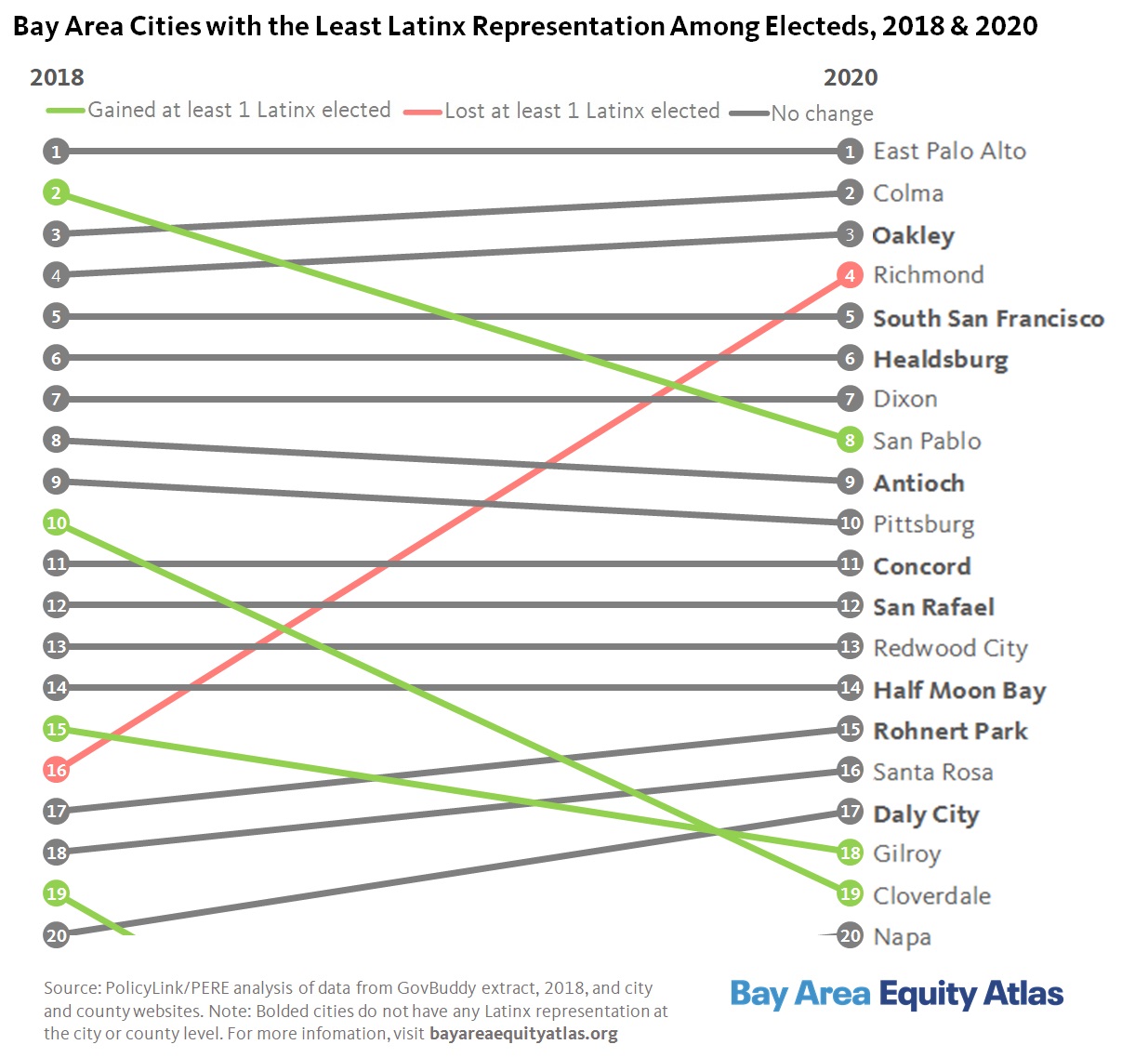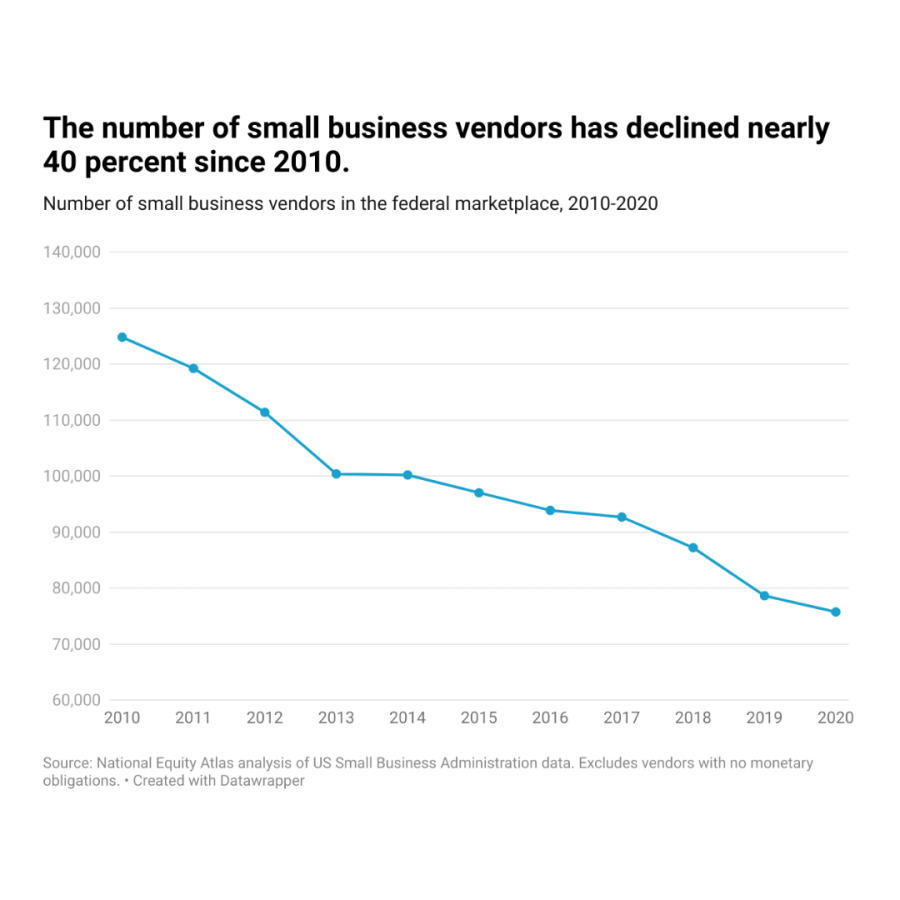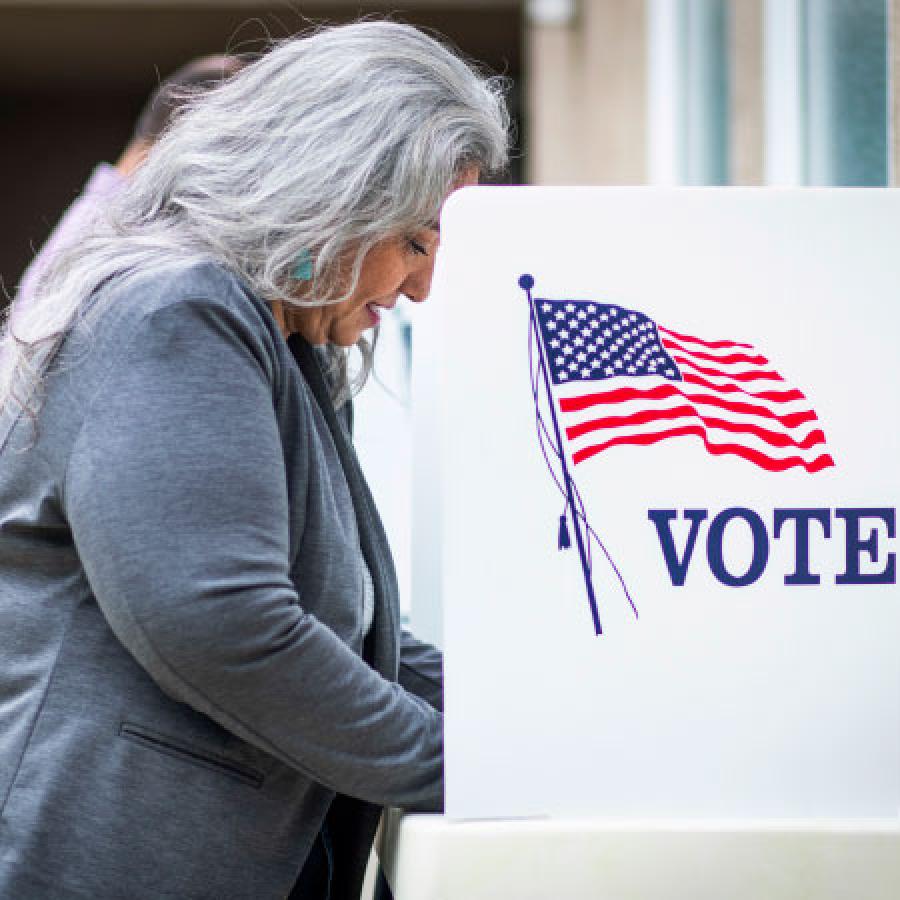Bay Area's Latinx Population Remains Highly Underrepresented in Local Politics
Despite the election of 10 Latinas in Bay Area cities in 2018 and 2019, Latinx residents remain largely underrepresented in local politics.
With many businesses across the Bay Area forced to shutter due to the coronavirus pandemic, we are reminded of how disasters and public health emergencies, rather than impacting everyone equally, exacerbate preexisting inequities. San Francisco reports that Latinx residents make up 24 percent of confirmed COVID-19 cases but are only 15 percent of the county’s population. The health and economic inequities experienced by Latinx people in the region are matched by political exclusion. Latinx people represent one of the Bay Area’s fastest-growing racial/ethnic groups but remain severely underrepresented in local elected offices, according to our recent analysis of new data on the diversity of elected officials from 2018 and 2019.
Latinx people make up 24 percent of residents in the nine-county Bay Area — including 33 percent of Napa County— but just 10 percent of top local elected officials identify as Latinx. With 170 seats up for grabs in the 2018 and 2019 elections, the total number of Latinx local electeds in the region increased by 10— and all were Latinas. Despite this slight uptick, it was not enough to considerably improve Latinx political representation.
Some Bay Area cities, however, did improve on the representativeness of their top electeds, while others fell behind. This post shares key findings from our analysis of how the region’s 101 cities are doing on this measure, which is calculated based on difference between the share of Latinxs among top elected officials and the share of Latinxs in the total population. Note that the city electeds include both city council and county elected officials (supervisors and DAs) because county electeds also represent city residents. This means that the typical city/town has 11 electeds included in the analysis (five council members, five county supervisors, and one county district attorney).
Little Improvement Among the Cities with the Greatest Latinx Underrepresentation
The cities with the starkest Latinx underrepresentation are largely the same as they were two years ago, with a few exceptions. East Palo Alto, Colma, Oakley, and South San Francisco saw no changes and remain among the top five most underrepresented cities for Latinxs. East Palo Alto, where Latinx people make up 63 percent of the population, remains number one as just 18 percent of local elected officials identify as Latinx. The city of Colma, which is 45 percent Latinx, moved into number two as just one local elected identifies as Latinx. People who are Latinx similarly make up 35 percent of Oakley but lack any Latinx representation at the city or county level. In South San Francisco, 34 percent of the population is Latinx but there are no top elected Latinx officials.
Importantly, three cities among the top 20 with the least Latinx political representation — San Pablo, Cloverdale, and Gilroy — elected at least one Latinx local elected official and improved their Latinx representation. The city of Richmond, on the other hand jumped from number 16 to the fourth most underrepresented city for Latinx people as discussed in more detail below.

San Pablo and Cloverdale See Biggest Gains Followed by Gilroy
San Pablo dropped out of the top 3 most underrepresented cities with the election of vice-mayor Elizabeth Pabon-Alvarado, who unseated a sixteen-year incumbent. But the city still ranks eighth in underrepresentation, however, as Latinxs make up 61 percent of the city’s population but are just 27 percent of local electeds.
In the North Bay, the city of Cloverdale also dropped out of the top 10 cities where Latinos were most underrepresented down to number 19 as the city, which is 31 percent Latino, elected a Latina to the city council in 2018. In fact, Council Member Marta Cruz cited the fact that Cloverdale had no Latinx representation on the city council or school board as a reason for her running.
In 2019, Gilroy became the Bay Area city with the second-highest number of local elected Latinx officials with five Latinx representatives (after San Jose which has 6 and is well represented). Yet Gilroy remained in the rankings of the top 20 most underrepresented cities for Latinxs because those five representatives make up just 38 percent of all top local elected officials in a city that is 61 percent Latinx.
Richmond was One of Four Cities in the Region that Lost a Latinx Elected Official
Richmond jumped to the fourth most underrepresented for Latinx people as one young Latina council member did not win reelection leaving just one Latinx elected official on the seven-person council in 2019. Latinxs make up 42 percent of the city’s population but are now only 8 percent of city and county elected officials.
Only three other cities lost a Latinx local elected official from 2018 to 2020: Oakland, San Francisco, and Alameda. Among these cities, only Oakland retains at least one Latinx councilmember. Both San Francisco and the city of Alameda lack any Latinx representatives at the city or county level.
47 Cities in the Region Lack Any Latinx Representation
The cities bolded in the chart above are notable because they do not have any Latinx elected officials at the municipal or county level despite having relatively large Latinx populations. Oakley, South San Francisco, Healdsburg, and Antioch are all 33 percent to 35 percent Latinx but lack Latinx representation entirely. Similarly, the cities of Concord and San Rafael, both roughly 30 percent Latinx, also lack any Latinx representation.
A Clear Need for Action
While representation does not ensure the passage of more equitable policies, it matters for political power. Local officials hold considerable power over the everyday lives of Bay Area residents, and they ought to reflect the diversity of the communities they serve. Improving on this indicator involves directly addressing the multiple barriers that hold Latinx residents back from running for political office whether they are economic, linguistic, institutional, or historic.
Even before the coronavirus epidemic, working-class people in the region were struggling to make rent, find affordable childcare, and secure living-wage jobs. The historic spike in layoffs and unemployment brought about by COVID-19 has only heightened economic insecurity. Many families are struggling to make ends meet and are focused on finding work and paying bills rather than increasing political involvement.
But political inclusion is a critical part of building a more equitable region and we, along with our partners at Bay Rising, lift up the following recommendations to move us toward just and fair inclusion into a region where all can participate and prosper:
- Local governments (cities, towns, and counties) should pass structural reforms including public campaign financing, like Berkeley’s program that provides candidates a 6-to-1 match on qualifying contributions of up to $50, and campaign finance reform to curtail corporate contributions, secret Super PACs, and “pay-to-play” politics.
- Local and national philanthropies and corporations should fund equity-oriented leadership development programs, like Urban Habitat’s Boards and Commissions Leadership Institute, that prepare people from underrepresented communities of color to effectively engage in public policy.
- Policymakers and funders should support voting reforms and civic engagement efforts that increase voter registration and turnout among underrepresented communities, especially in local elections.


